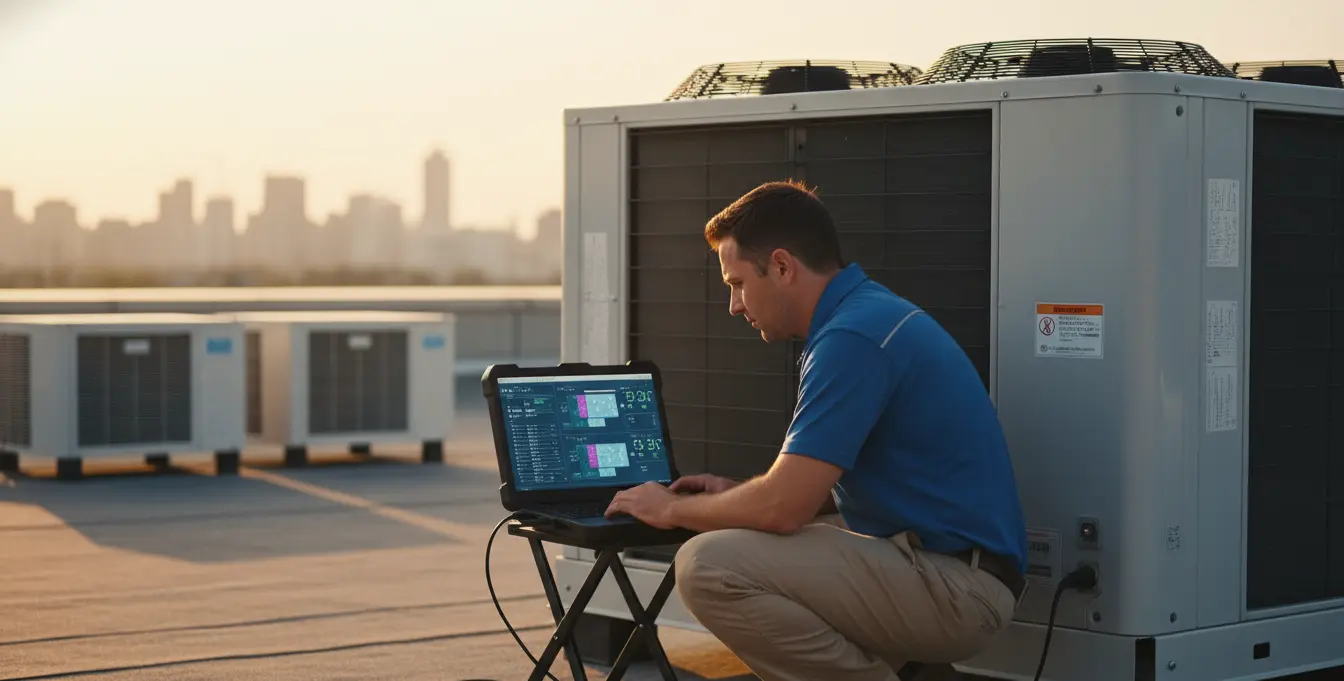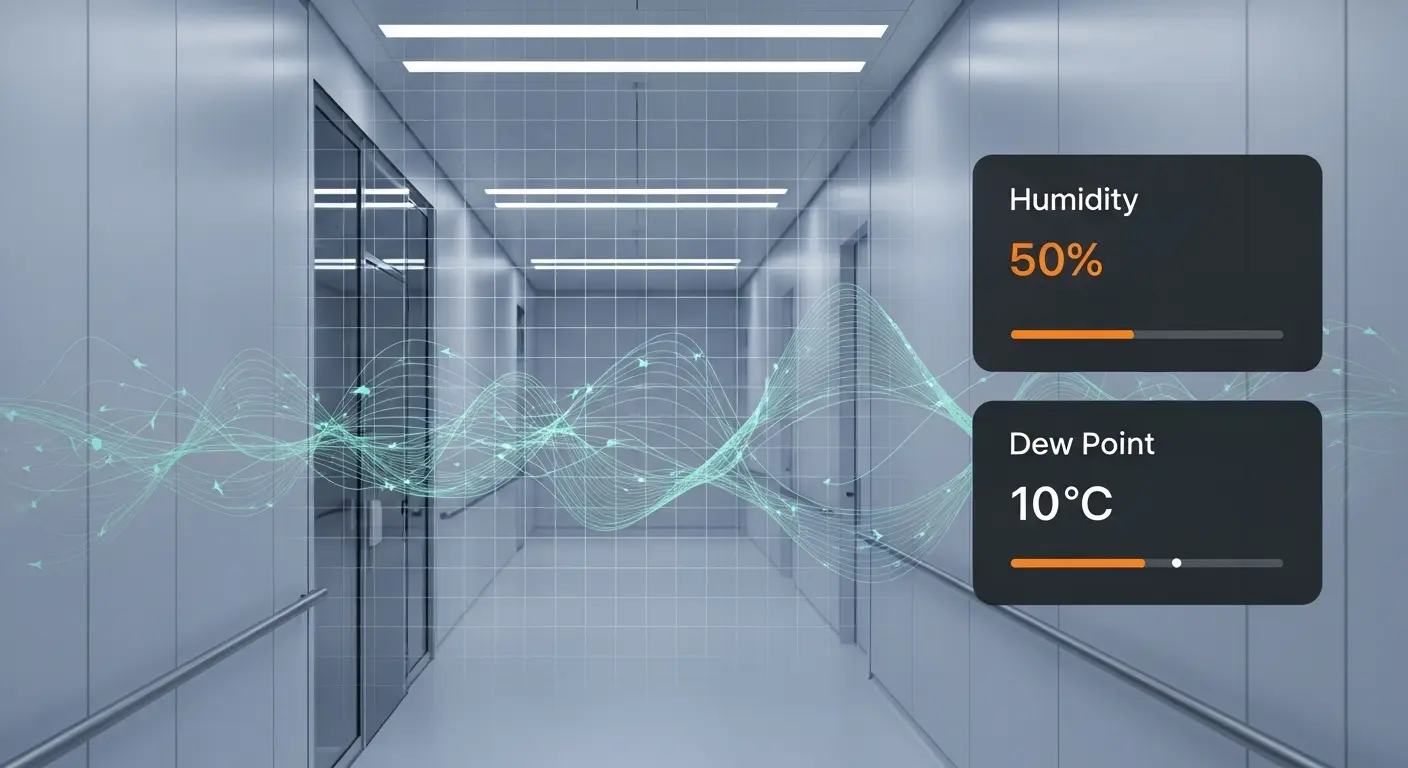HVAC
Beyond the Thermostat: Unleashing Real Efficiency with Smart Tech & AI in Your HVAC Business

Here at Trade Agent, we're sick of watching good HVAC businesses bleed money through inefficiency. Let's get real – you're not just in the business of keeping people comfortable. You're juggling scheduling, diagnostics, inventory, paperwork, and trying to keep your margins from evaporating faster than R-410A.
The Hidden Costs That Are Killing Your Profits
Let's break down what's really happening to your bottom line:
- The Cross-Town Shuffle: Your techs are crisscrossing your service area like a spider on caffeine. According to research, HVAC companies waste about 10 hours weekly on unnecessary admin and travel time – that's over 500 hours annually you're paying for while your techs stare at traffic lights. Studies show HVAC companies waste around ten hours every week on admin work alone.
- The Parts-Swapping Casino: How much time do your techs spend guessing and swapping parts until something works? Each callback costs $200-450 in unbillable labor, not counting the hit to your reputation. One study found 5% of all service calls result in callbacks – how much is that costing you annually?
- Admin Quicksand: The average HVAC business spends 14+ hours weekly pushing paper. Meanwhile, the U.S. HVAC services market is projected to grow from $25.6 billion to $35.8 billion by 2030. Are you positioned to capitalize on that growth, or are you drowning in paperwork?
- Reactive Repair Cycles: When HVAC systems fail unexpectedly, it creates an emergency for your customers and chaos for your schedule. According to the American Society of Home Inspectors, three million heating and cooling systems are replaced annually, with $14 billion spent on HVAC services or repairs. How much of that market are you capturing with your reactive approach?
Field Intelligence: Smart Tools That Actually Solve Problems
Forget fancy thermostats. Here's where the real revolution is happening:
1. IoT-Powered Diagnostics
Smart sensors installed on HVAC equipment provide real-time data on critical performance metrics, allowing you to detect issues before they become catastrophic failures. According to Particle.io, "IoT sensors send back alerts when they detect a problem, allowing contractors to prioritize service calls, reduce unnecessary truck rolls, prevent equipment failures, and unlock new revenue streams."
These sensors monitor:
- Pressure variations
- Abnormal vibrations
- Temperature fluctuations
- Airflow disruptions
- Electrical consumption patterns
With this intelligence, you can diagnose problems remotely without wasting a trip, and when you do send a tech, they arrive knowing exactly what to fix.
2. AI-Driven Preventative Maintenance
The days of calendar-based maintenance are over. AI can analyze system performance data to predict failures before they happen. This means:
- Scheduling service when actually needed, not just "every six months"
- Alerting customers to developing issues before they experience discomfort
- Creating new revenue streams through predictive maintenance packages
- Reducing emergency calls that wreck your schedule and stress your team
As Zenatix by Schneider Electric explains, "HVAC systems powered by IoT use smart sensors to collect real-time asset health data... It then uses cloud-based AI/ML data analytics to detect irregularities in operations and potential flaws in equipment and processes in order to correct them before they fail."
3. Remote Monitoring & Control
The ability to remotely diagnose systems is a game-changer for HVAC businesses. This isn't just convenient, it's profitable:
- Resolve some issues entirely remotely without sending a tech
- Ensure the right tech with the right skills and parts is dispatched first time
- Provide proof of necessary repairs to skeptical customers
- Offer premium service packages with 24/7 monitoring
Back Office Brains: AI Eliminating Your Administrative Burden
The back office is where smart HVAC businesses are seeing massive efficiency gains. Here's how:
1. Intelligent Scheduling & Dispatch
Route optimization can cut your fuel costs and service more customers with the same team size. Using AI-powered scheduling:
- Reduces unnecessary driving by up to 25%
- Groups jobs geographically to maximize productive time
- Matches tech skills to job requirements automatically
- Adapts in real-time to emergency calls without derailing the whole day
Trade Agent can help with that.
2. AI-Powered Estimating & Admin
Imagine creating accurate quotes in seconds that protect your margins:
- Generate professional estimates from photos, voice notes, or documents
- Automatically include current material costs and labor rates
- Identify potential risks and suggest contingencies
- Send invoices automatically when jobs are marked complete
3. Data-Driven Decision Making
Stop running your business on hunches. AI analytics reveal:
- Which services are most profitable
- Which techs are most efficient
- Which neighborhoods have the highest service density
- When to stock up on seasonal parts before prices rise
The Bottom Line: More Than Just Saved Time
This isn't about chasing shiny tech—it's about tangible business outcomes:
- Higher First-Time Fix Rates: When techs know the problem and have the right parts before arriving, callback rates plummet.
- More Jobs Per Day: With efficient routing and less diagnostic guesswork, the same team handles more service calls.
- Increased Average Ticket Size: Data-backed recommendations for system upgrades or maintenance plans boost your revenue per customer.
- Reduced Fuel and Vehicle Costs: Smart routing means less driving and lower operational costs.
- Higher Customer Retention: Proactive service and faster response times build loyalty and generate referrals.
- Better Work-Life Balance: Fewer emergency calls and after-hours headaches mean happier techs and owners.
The Future Is Already Here
The HVAC industry is changing fast. The global HVAC systems market is projected to grow from $233.55 billion in 2023 to $382.66 billion by 2030, according to industry research. Meanwhile, younger tradespeople entering the field expect modern tools that help them work smarter, not harder.
While your competitors are still pushing paper and chasing callbacks, you have an opportunity to transform your operation with AI and IoT technologies that deliver real results. It's not about keeping up with technology, it's about staying ahead of your competition and maximizing your profitability.
The question isn't whether you can afford to adopt these technologies. It's whether you can afford not to.
Similar posts
Try it for free


















